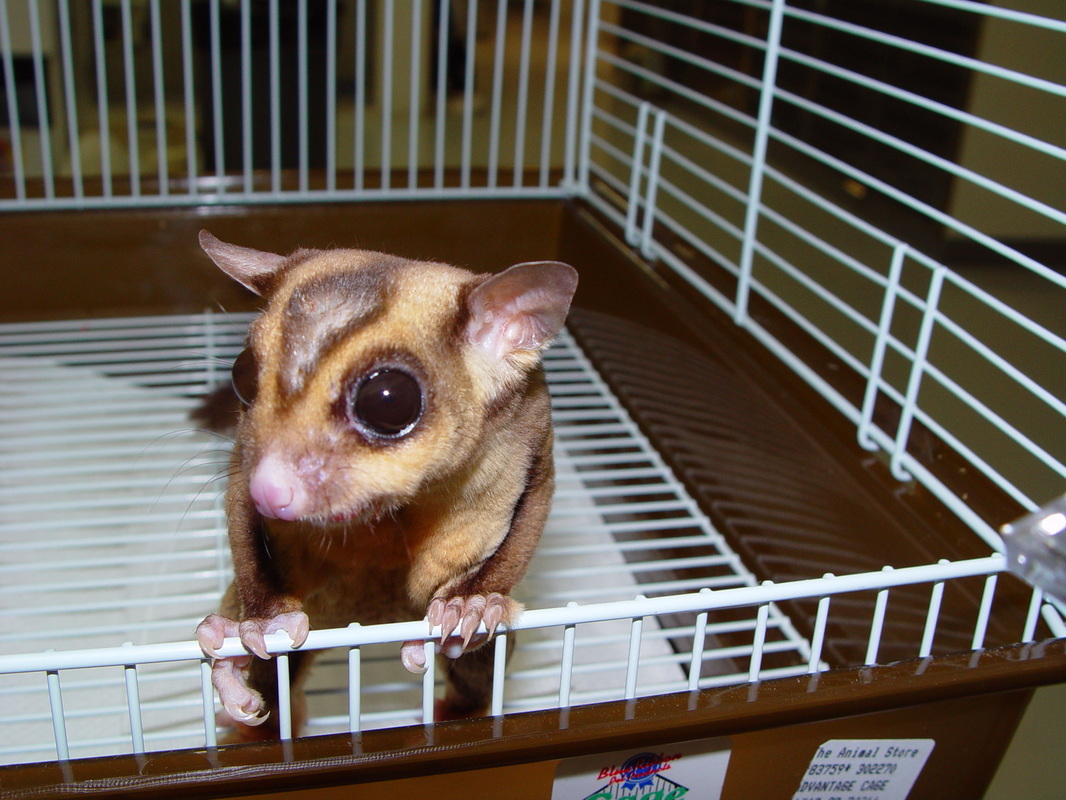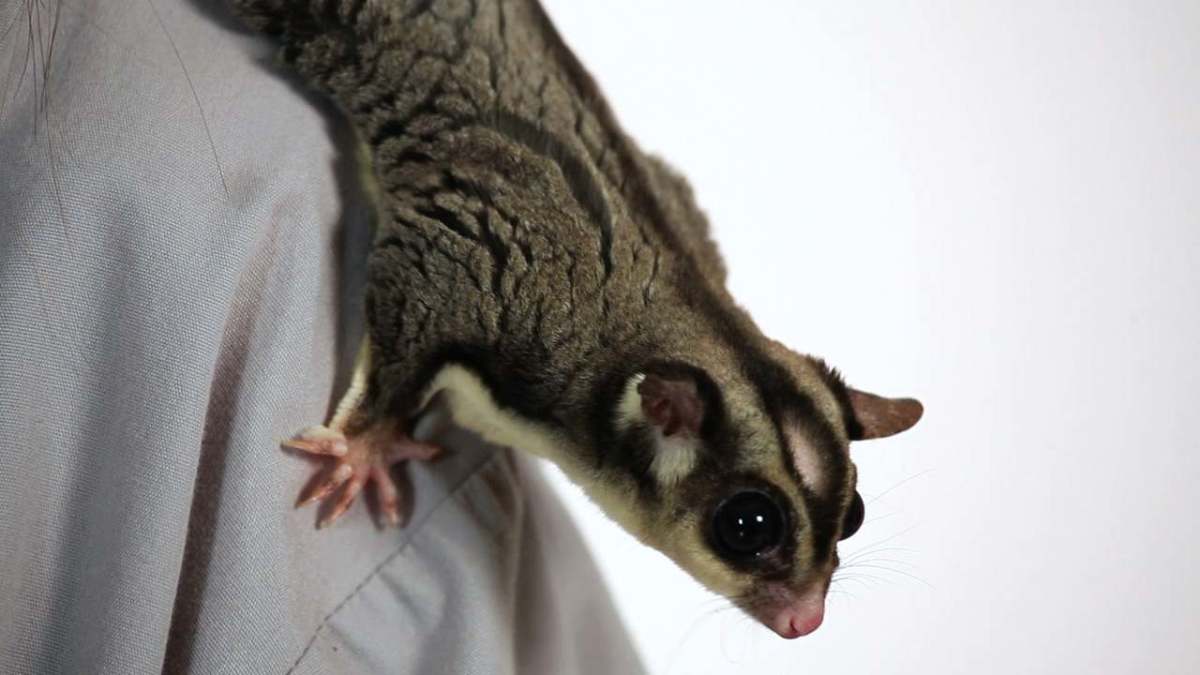

Sugar gliders naturally live in quite large groups. You can cohabit males and females provided the male(s) are neutered (castrating male sugar gliders is a relatively simple procedure if performed by an experienced vet). You should never keep sugar gliders alone as it can cause them to become very depressed and display stereotypical behaviours. The base of the cage can be filled with safe aspen or paper substrate which will need to be spot cleaned daily and fully emptied at least weekly. It is advised to place food into feeders high off the ground, and nectar can be placed on trees within their accommodation.

Some sugar glides appreciate safe bird toys available for additional enrichment. Providing vertical trees, ropes, and branches will allow for natural gliding behaviour. Nest areas are essential and should be positioned high in the cage, but not too high so that the glider will potentially tear their membrane when landing on the top, and with sufficient space between nest boxes to prevent territorial aggression. If additional heating is required, please ensure to use a thermostat as well as a thermometer to manage heating. Their preferred te mperature range is 27☌ to 31☌, but they can tolerate ranges as much as 15☌ to 32☌. A human home may be at the lower end of their metabolic tolerance and comfort zone. Even heating an entire room would be challenging to be of a suitable and consistent temperature would be challenging. It is important to consider the climate you live in, for example, in the UK it is far more beneficial to house sugar gliders in a vivarium type set up as the temperature and humidity can be far more easily regulated. It is preferred for the wire to be made of stainless steel coated in PVC as sugar gliders are prone to zinc poisoning. Should the enclosure be made from mesh, it should be no wider than 1.25-2.5cm to prevent injury and escapes. Their eyes are large, protruding, and widely spaced giving them a large field of vision well adapted to seeing at night.Įnclosures should be as large as possible, sources state a minimum of 2m wide by 2m long and at least 1.8m high, but a larger enclosure is always better. They have a thin gliding membrane called the patagium that extends from the fifth digit of the forepaws to their ankles, and their tail is somewhat prehensile which helps them move safely and effectively around their home environment. They belong to the family Petauridae which translates to ‘wrist-winged gliders. Sugar gliders are able to glide (up to 50m) as their name suggests.


Their anatomy has evolved to be perfectly adapted to their native environment. They are a social, nocturnal and arboreal species. They have a range of habitats that are primarily forests in either tropical, coastal, or dry inland sclerophyll tropical. Sugar gliders are marsupials native to Australia and New Guinea. They have an average lifespan of 7 years. Given their extreme husbandry requirements and frequent cases of neglect seen in captivity, keeping them in captivity should be discouraged. They're highly social mammals and it can often be found living in groups of up to 10 in the wild. They're nocturnal, and their omnivorous diet is incredibly challenging to replicate in captivity (we will touch on that later). T he sugar glider is commonly found throughout mainland Australia, New Guinea, Tasmania, and other local areas. In fact, sugar gliders closer to Kangaroos - and, like most marsupials, carry their young within a pouch. Marsupials are not rodents, not even close. Sugar gliders are undeniably an absolutely adorable gliding marsupial. You must be well educated before committing to a pet sugar glider as many of the most common health issues seen in captivity are the result of poor husbandry. This is partly due to a lack of education as well as a lack of research surrounding proper husbandry. We've noticed that sugar gliders are an exotic animal with so many misconceptions and misinformation surrounding their care.


 0 kommentar(er)
0 kommentar(er)
